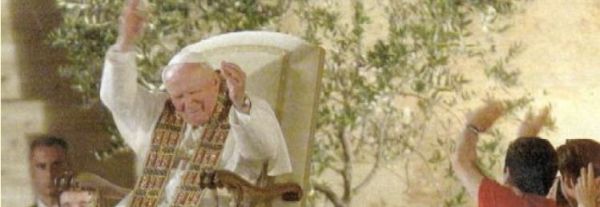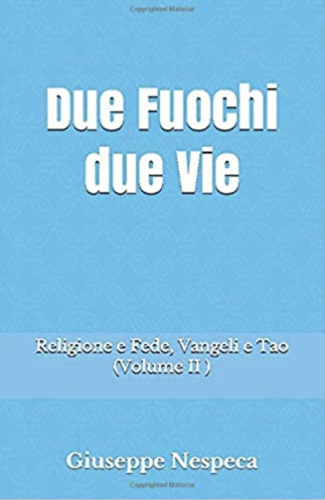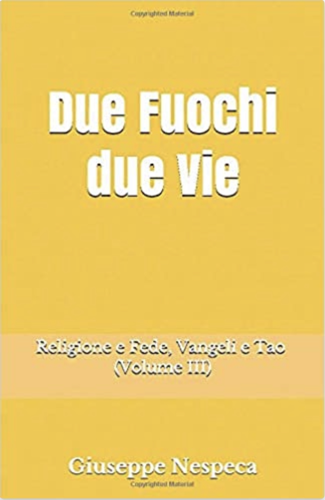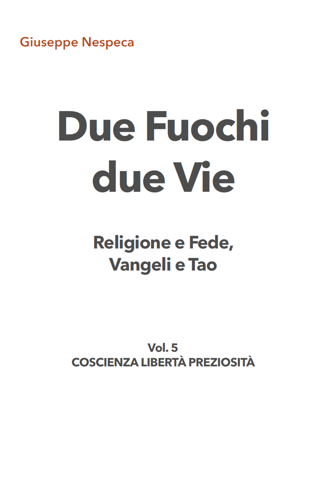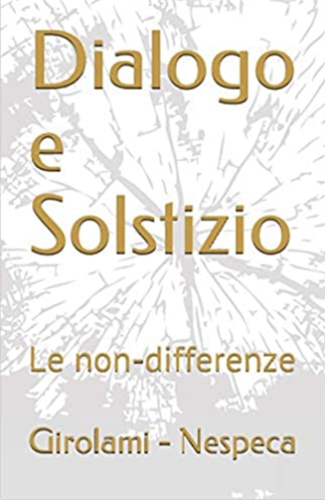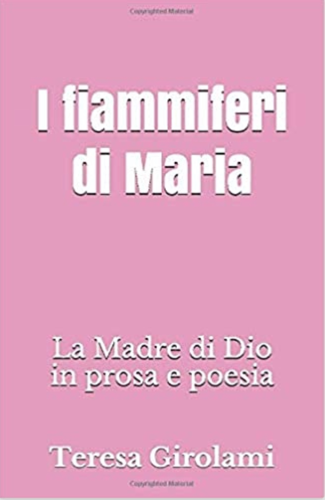1. Man, created in the image of God, is both a physical and spiritual being, that is, a being who is connected to the external world in one respect and transcends it in another. As spirit as well as body, he is a person. This truth about man is the object of our faith, as is the biblical truth about his constitution in the 'image and likeness' of God; and it is a truth that has been constantly presented throughout the centuries by the Magisterium of the Church.
The truth about man has never ceased to be the subject of intellectual analysis throughout history, both in philosophy and in numerous other human sciences: in a word, the subject of anthropology.
2. That man is an incarnate spirit, if you will, a body informed by an immortal spirit, can already be gleaned in some way from the description of creation contained in the Book of Genesis and in particular from the "Yahwist" account, which makes use, so to speak, of "staging" and anthropomorphic images. We read that 'the Lord God formed man from the dust of the ground and breathed into his nostrils the breath of life, and man became a living being' (Gen 2:7). The rest of the biblical text allows us to understand clearly that man, created in this way, is distinct from the entire visible world, and in particular from the world of animals. The 'breath of life' enabled man to know these beings, to name them and to recognise himself as different from them (cf. Gen 2:18-20). Although the 'Yahwist' description does not mention the 'soul', it is easy to deduce that the life given to man in the act of creation is of such a nature as to transcend the simple bodily dimension (that of animals). It draws, beyond materiality, on the dimension of the spirit, in which lies the essential foundation of that 'image of God' that Genesis 1:27 sees in man.
3. Man is a unity: he is someone who is one with himself. But this unity contains a duality. Sacred Scripture presents both unity (the person) and duality (the soul and the body). Consider, for example, the Book of Sirach, which says: "The Lord created man from the earth and returns him to it again" and further on: "He gave them (men) discernment, tongue, eyes, ears and heart to reason. He filled them with doctrine and intelligence and also showed them good and evil" (Sir 17:1, 5-6).
Particularly significant from this point of view is Psalm 8 (Ps 8:5-7), which exalts the human masterpiece, addressing God with the following words: "What is man that you are mindful of him, the son of man that you care for him? Yet you have made him little less than the angels, you have crowned him with glory and honour; you have given him power over the works of your hands. You have put everything under his feet."
4. It is often emphasised that the biblical tradition highlights above all the personal unity of man, using the term "body" to designate the whole man (cf. Ps 145 (144):21; Jn 3:1; Is 66:23; Jn 1:14). This observation is correct. But this does not mean that the biblical tradition does not also present, sometimes very clearly, the duality of man. This tradition is reflected in the words of Christ: "Do not be afraid of those who kill the body but cannot kill the soul; rather, be afraid of the one who can destroy both soul and body in Gehenna" (Mt 10:28).
5. Biblical sources authorise us to see man as a personal unity and at the same time as a duality of soul and body: a concept that has found expression in the entire Tradition and teaching of the Church. This teaching has incorporated not only biblical sources, but also the theological interpretations that have been given to them, developing the analyses conducted by certain schools (Aristotle) of Greek philosophy.
It was a slow process of reflection, culminating mainly under the influence of St Thomas Aquinas - in the pronouncements of the Council of Vienne (1312), where the soul is called the 'form' of the body: 'forma corporis humani per se et essentialiter' (DS 902). The 'form', as the factor that determines the substance of being 'human', is spiritual in nature. And this spiritual 'form', the soul, is immortal. This is what the Fifth Lateran Council (1513) authoritatively recalled: the soul is immortal, unlike the body, which is subject to death (cf. DS 1440). At the same time, Thomistic theology emphasises that, by virtue of the substantial union of body and soul, the latter, even after death, does not cease to 'aspire' to be united with the body. This is confirmed by the revealed truth about the resurrection of the body.
6. Although the philosophical terminology used to express the unity and complexity (duality) of man is sometimes criticised, there is no doubt that the doctrine on the unity of the human person and, at the same time, on the spiritual-corporal duality of man is fully rooted in Sacred Scripture and Tradition. And although it is often expressed that man is 'the image of God' because of his soul, traditional doctrine does not exclude the belief that the body also participates, in its own way, in the dignity of the 'image of God', just as it participates in the dignity of the person.
7. In modern times, a particular difficulty against the revealed doctrine concerning the creation of man as a being composed of soul and body has been raised by the theory of evolution. Many scholars of the natural sciences who, using their own methods, study the problem of the beginning of human life on earth, maintain—against other colleagues—not only the existence of a link between man and the whole of nature, but also the derivation of the higher animal species. This problem, which has occupied scientists since the last century, involves broad sections of public opinion. The response of the Magisterium was offered in the encyclical Humani generis by Pius XII in 1950. In it we read: "The Magisterium of the Church has nothing against the doctrine of 'evolutionism', insofar as it investigates the origin of the human body from pre-existing and living matter - Catholic faith in fact obliges us to hold firmly that souls were created immediately by God - being the subject of investigation and discussion by experts . . ." (DS 3896).
It can therefore be said that, from the point of view of the doctrine of the faith, there is no difficulty in explaining the origin of man, as a body, through the hypothesis of evolutionism. However, it must be added that the hypothesis proposes only a probability, not a scientific certainty. The doctrine of the faith, on the other hand, invariably affirms that the spiritual soul of man is created directly by God. That is, according to the hypothesis mentioned above, it is possible that the human body, following the order imprinted by the Creator in the energies of life, was gradually prepared in the forms of earlier living beings. The human soul, however, on which the humanity of man ultimately depends, being spiritual, cannot have emerged from matter.
8. A beautiful synthesis of the above creation can be found in the Second Vatican Council: 'The unity of soul and body,' it says, 'man synthesises in himself, by his very bodily condition, the elements of the material world, so that through him they reach their summit' (Gaudium et Spes, 14). And further on: "Man, however, is not mistaken in recognising himself as superior to bodily things and considering himself more than just a particle of nature... In fact, in his interiority, he transcends the universe" (Gaudium et Spes, 14). Here, then, is how the same truth about the unity and duality (complexity) of human nature can be expressed in language closer to the contemporary mindset.
[Pope John Paul II, General Audience, 16 April 1986]
Personal unity and duality

don Giuseppe Nespeca
Giuseppe Nespeca è architetto e sacerdote. Cultore della Sacra scrittura è autore della raccolta "Due Fuochi due Vie - Religione e Fede, Vangeli e Tao"; coautore del libro "Dialogo e Solstizio".
Email This email address is being protected from spambots. You need JavaScript enabled to view it.Christianity cannot be, cannot be exempt from the cross; the Christian life cannot even suppose itself without the strong and great weight of duty [Pope Paul VI]
Il Cristianesimo non può essere, non può essere esonerato dalla croce; la vita cristiana non può nemmeno supporsi senza il peso forte e grande del dovere [Papa Paolo VI]
The horizon of friendship to which Jesus introduces us is the whole of humanity [Pope Benedict]
L’orizzonte dell’amicizia in cui Gesù ci introduce è l’umanità intera [Papa Benedetto]
However, the equality brought by justice is limited to the realm of objective and extrinsic goods, while love and mercy bring it about that people meet one another in that value which is man himself, with the dignity that is proper to him (Dives in Misericordia n.14)
L'eguaglianza introdotta mediante la giustizia si limita però all’ambito dei beni oggettivi ed estrinseci, mentre l'amore e la misericordia fanno si che gli uomini s'incontrino tra loro in quel valore che è l'uomo stesso, con la dignità che gli è propria (Dives in Misericordia n.14)
The Church invites believers to regard the mystery of death not as the "last word" of human destiny but rather as a passage to eternal life (Pope John Paul II)
La Chiesa invita i credenti a guardare al mistero della morte non come all'ultima parola sulla sorte umana, ma come al passaggio verso la vita eterna (Papa Giovanni Paolo II)
The saints: they are our precursors, they are our brothers, they are our friends, they are our examples, they are our lawyers. Let us honour them, let us invoke them and try to imitate them a little (Pope Paul VI)
I santi: sono i precursori nostri, sono i fratelli, sono gli amici, sono gli esempi, sono gli avvocati nostri. Onoriamoli, invochiamoli e cerchiamo di imitarli un po’ (Papa Paolo VI)
Man rightly fears falling victim to an oppression that will deprive him of his interior freedom, of the possibility of expressing the truth of which he is convinced, of the faith that he professes, of the ability to obey the voice of conscience that tells him the right path to follow [Dives in Misericordia, n.11]
L'uomo ha giustamente paura di restar vittima di una oppressione che lo privi della libertà interiore, della possibilità di esternare la verità di cui è convinto, della fede che professa, della facoltà di obbedire alla voce della coscienza che gli indica la retta via da seguire [Dives in Misericordia, n.11]
We find ourselves, so to speak, roped to Jesus Christ together with him on the ascent towards God's heights (Pope Benedict)
Ci troviamo, per così dire, in una cordata con Gesù Cristo – insieme con Lui nella salita verso le altezze di Dio (Papa Benedetto)
Church is a «sign». That is, those who looks at it with a clear eye, those who observes it, those who studies it realise that it represents a fact, a singular phenomenon; they see that it has a «meaning» (Pope Paul VI)
La Chiesa è un «segno». Cioè chi la guarda con occhio limpido, chi la osserva, chi la studia si accorge ch’essa rappresenta un fatto, un fenomeno singolare; vede ch’essa ha un «significato» (Papa Paolo VI)
Let us look at them together, not only because they are always placed next to each other in the lists of the Twelve (cf. Mt 10: 3, 4; Mk 3: 18; Lk 6: 15; Acts 1: 13), but also because there is very little information about them, apart from the fact that the New Testament Canon preserves one Letter attributed to Jude Thaddaeus [Pope Benedict]
duevie.art
don Giuseppe Nespeca
Tel. 333-1329741
Disclaimer
Questo blog non rappresenta una testata giornalistica in quanto viene aggiornato senza alcuna periodicità. Non può pertanto considerarsi un prodotto editoriale ai sensi della legge N°62 del 07/03/2001.
Le immagini sono tratte da internet, ma se il loro uso violasse diritti d'autore, lo si comunichi all'autore del blog che provvederà alla loro pronta rimozione.
L'autore dichiara di non essere responsabile dei commenti lasciati nei post. Eventuali commenti dei lettori, lesivi dell'immagine o dell'onorabilità di persone terze, il cui contenuto fosse ritenuto non idoneo alla pubblicazione verranno insindacabilmente rimossi.



